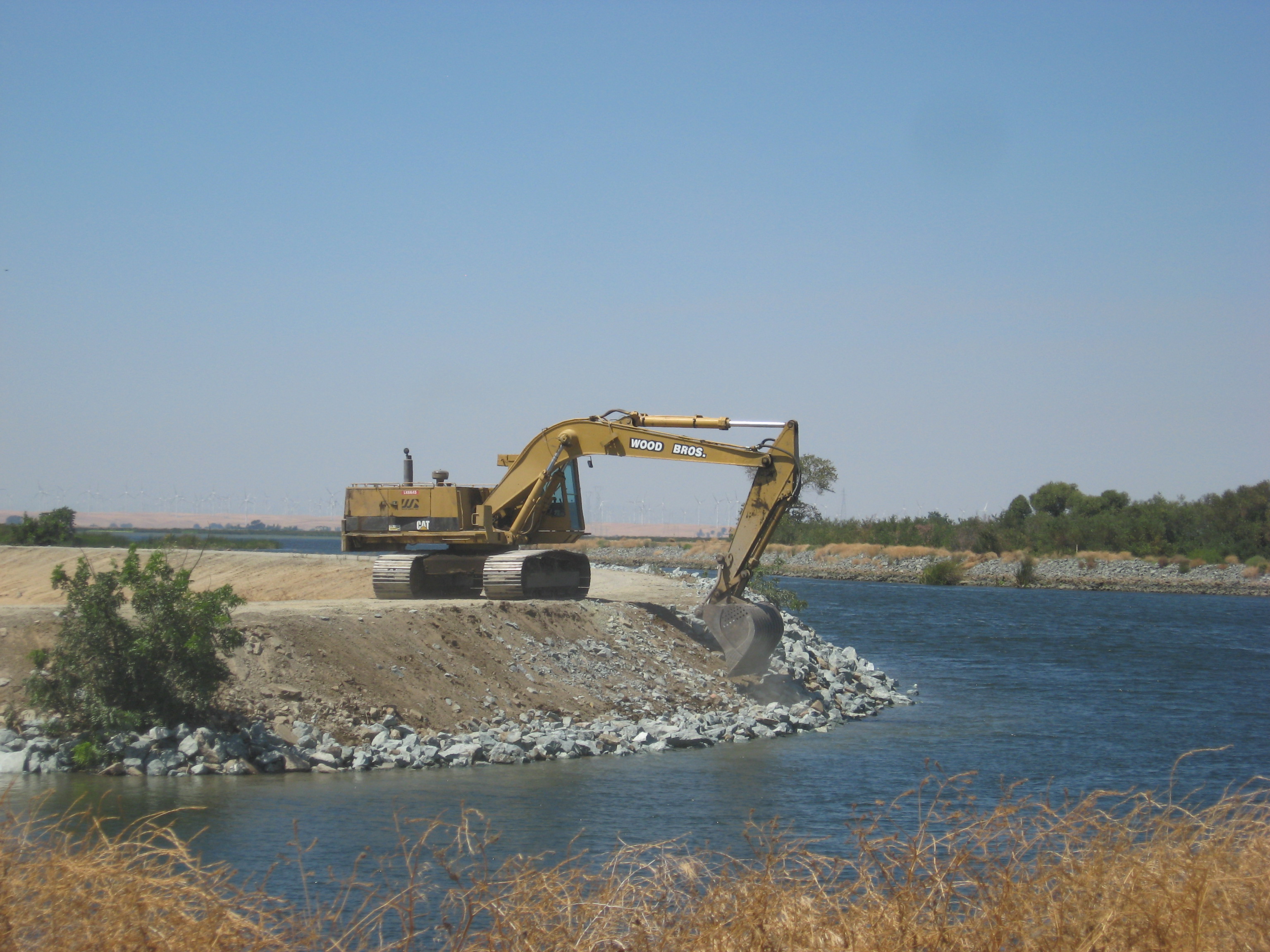Construction equipment removes sand from a borrow pit to be placed at the Dutch Slough Tidal Marsh Restoration Project in the Sacramento-San Joaquin Delta implemented by the California Department of Water Resources. DWR/2018
SACRAMENTO - The Department of Water Resources (DWR), along with state and local partners, today celebrated the groundbreaking of the Delta’s largest tidal wetlands restoration project. The Dutch Slough Tidal Restoration Project will re-establish a rich ecological network that will boost survival rates of endangered fish and wildlife while also protecting neighborhoods against flooding.
“We’re advancing scientific knowledge of the Delta and preserving fish and wildlife harmed by decades of land and levee development,” DWR Deputy Director Kristopher Tjernell said at today’s event in Oakley. “This project is good for fish and wildlife. It’s good for water and air quality, and for the state of California.”
Located on the Delta’s western edge, the Dutch Slough Tidal Marsh Restoration Project will transform 1,187 acres of a former grazing area into a rich habitat for fish and wildlife. The project is part of the California EcoRestore Initiative, a multi-agency endeavor to restore more than 30,000 acres of wildlife habitat in the Delta by 2020. EcoRestore marks the Delta’s largest-ever restoration program.
Tidal marsh elevation requires land that gradually slopes upward. In May 2018, DWR began moving dirt from higher elevations to lower elevations, so that water can eventually flow in from the Delta channels and out with the daily tides. The project is expected to be completed once the levees are breached in 2021, and native fish and wildlife can populate the area.
Once completed, Dutch Slough will serve as a regional park with hiking and bike trails. Visitors will be able to learn about biology and history through interpretive signs. This vast marshland will take visitors back in time, to a vibrant ecological wetland reminiscent of the Delta of the early 1800s. The site will also provide flood protection to nearby housing, guarding against rising sea levels triggered by climate change.
Tjernell hailed Dutch Slough as a “living laboratory” because the tidal marsh will inform generations of scientific study and adaptive wetland management in California. Environmental stewardship drives every major decision at DWR, the deputy director noted. In the coming years, the department must prepare for increasing hazards of climate change while ensuring a reliable supply of clean water for 27 million Californians.
Located on the west side of the Delta near the confluence of the Sacramento and San Joaquin rivers, Dutch Slough is close to the Suisun Marsh estuary where salt water mixes with fresh water, creating an environmentally rich and varied habitat compared to other marsh sites. The transformation of retired agricultural land into tidal marsh will create a mostly predator-free space for juvenile salmon and other species in decline.
“It’s essentially a safe neighborhood for fish,” said Patty Finfrock, DWR’s project manager for Dutch Slough. “The salmon breed upstream, and their young will swim downstream and find plenty of food and shelter.”
John Cain, Director of Conservation for California Flood Management at American Rivers discovered the ecological possibility of the site in 1999 and convinced local leaders that tidal marsh was the best use for the site. “We made the case that this was the best way to preserve the Delta shoreline while being able to provide access for people to walk along trails and to safely boat and fish,” Cain said.
+ For more information, visit DWR’s Dutch Slough web page.
+ Photos are available for download at DWR's Pixel website.
Contact:
Allen Young, Public Affairs, Department of Water Resources
916-653-3925 work | 916-834-5922 | allen.young@water.ca.gov
